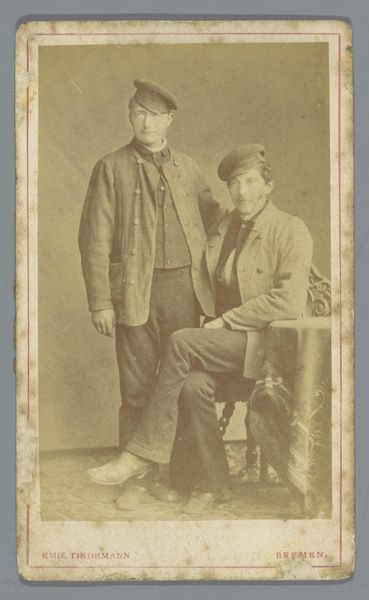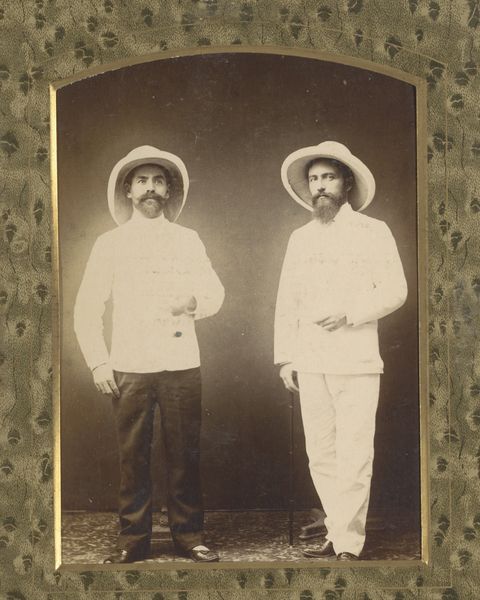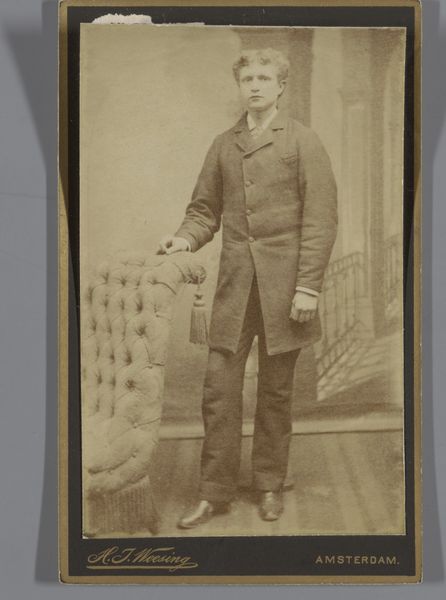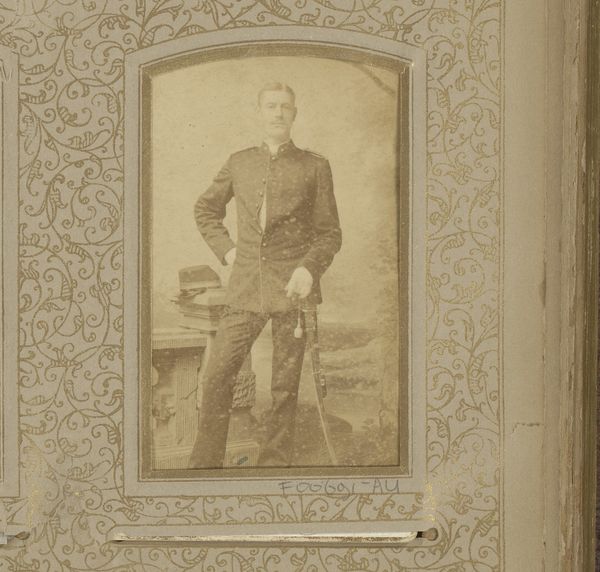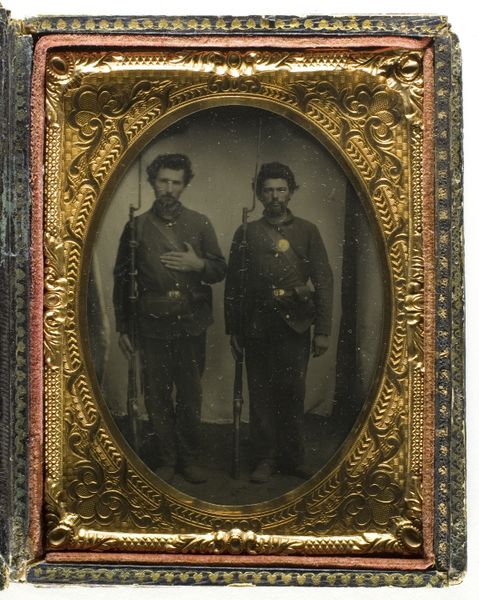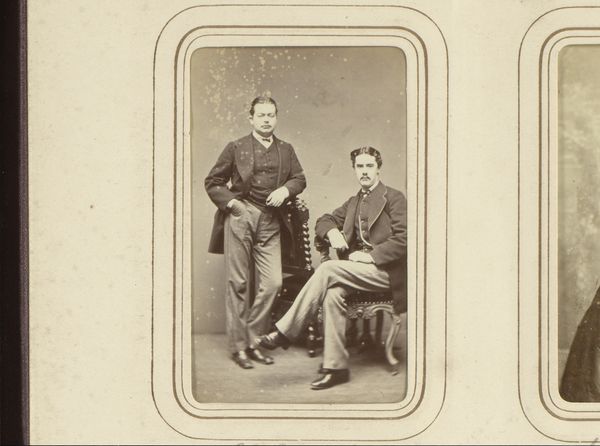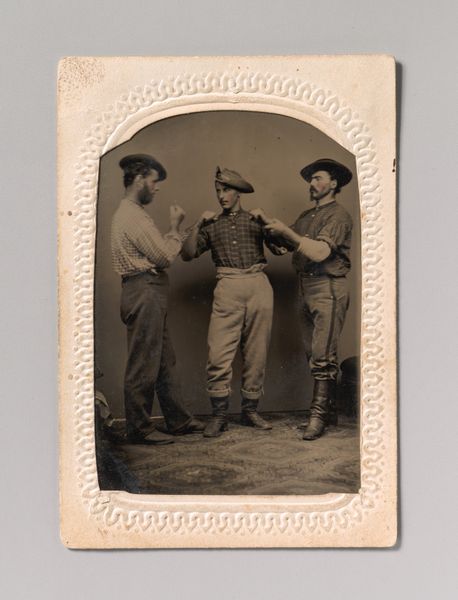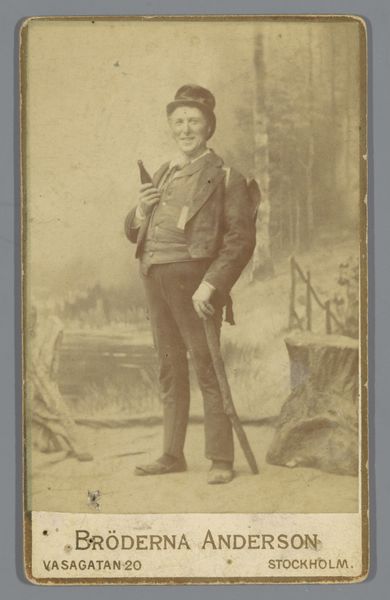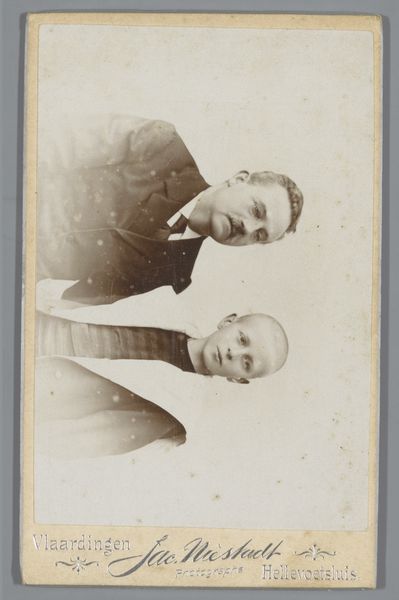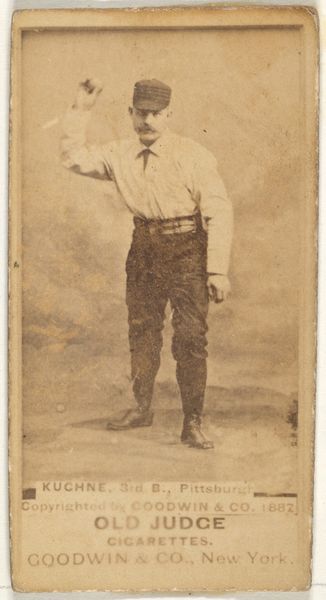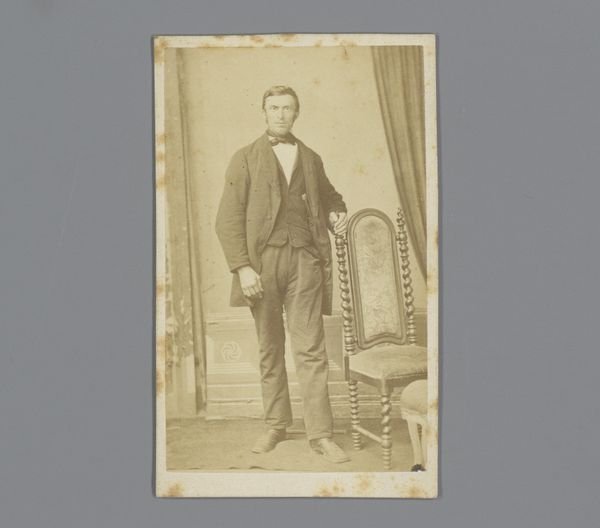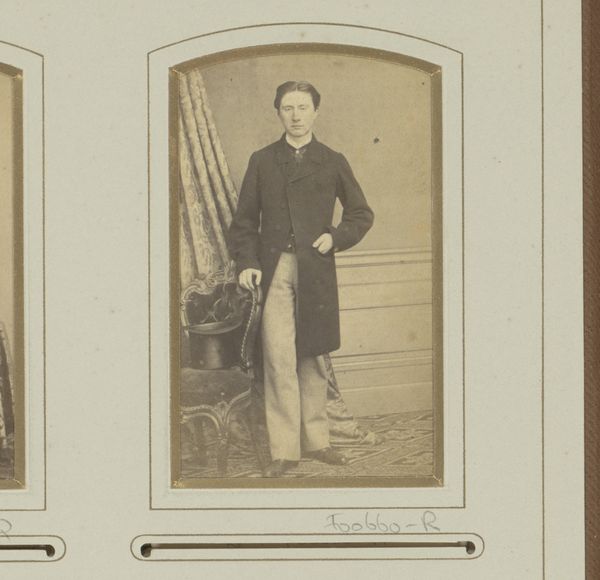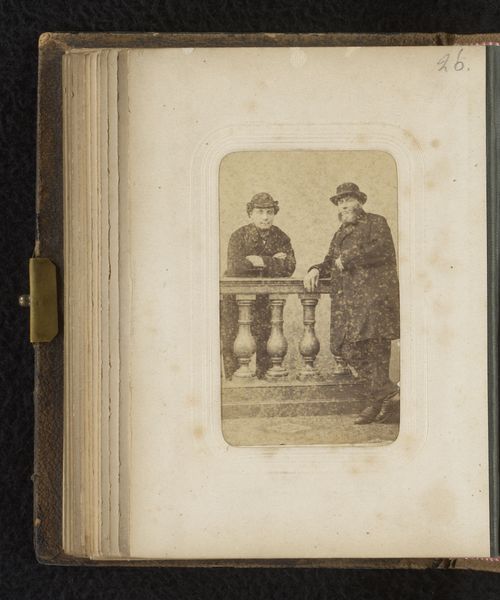
Untitled (Portrait of Standing Two Men Holding Tools) 1875
0:00
0:00
daguerreotype, photography
#
portrait
#
16_19th-century
#
sculpture
#
daguerreotype
#
photography
#
men
#
united-states
#
history-painting
Dimensions: 14 × 10.8 cm (5 1/2 × 4 1/4 in., plate); 15.2 × 24.2 × 1.3 cm (open case); 15.2 × 12.1 × 2.2 cm (case)
Copyright: Public Domain
Curator: What strikes me first is the stark contrast, a hallmark of the daguerreotype, which underscores a working-class solidarity, perhaps. Editor: That's immediately where my eye goes as well. There's a quiet resilience in those two men, though; you see it in the firmness of their gazes. There's something so revealing about its composition, its lack of romanticism. Curator: This photograph, "Untitled (Portrait of Standing Two Men Holding Tools)" by Jesse Harrison Whitehurst, was created around 1875. Its formal presentation elevates these men beyond just laborers; this reflects a specific cultural aspiration to honor American industry, a national myth-making almost. Editor: Certainly, and framing them like this is powerful. Daguerreotypes, in their time, weren't exactly accessible for everyone. It prompts the questions, "Who are they and why were they subjects for such a fairly expensive process?" There is this intersection of class, labor, and even visibility. Curator: Precisely. Photography offered new means to represent a changing social order in the post-Civil War United States. Their tools, their dress—these elements intentionally communicate purpose. We are meant to perceive them as dignified contributors. Editor: Do you see how those ornamental details contrast so boldly? Look at that gorgeous frame. It speaks to the era's tensions; industrial progress clashing against the rigid class lines. In the broader sweep of history, consider the struggle for worker’s rights that ensued soon after. It’s almost prophetic. Curator: Perhaps the decorative frame softens any subversive reading and transforms what would otherwise be a very intimate and human portrait into a piece fit for the parlor—subject to the conventions of domestic, bourgeois life. Editor: Or maybe, the ornate setting amplifies the reality of their labor; those are tools that quite literally built America. Curator: Either way, this image leaves us contemplating how historical events shape personal narratives and, reciprocally, how individuals define broader socio-economic trends. Editor: Absolutely; I see in them not just historical subjects, but a living embodiment of labor movements, the echoes of which resonate today.
Comments
No comments
Be the first to comment and join the conversation on the ultimate creative platform.

